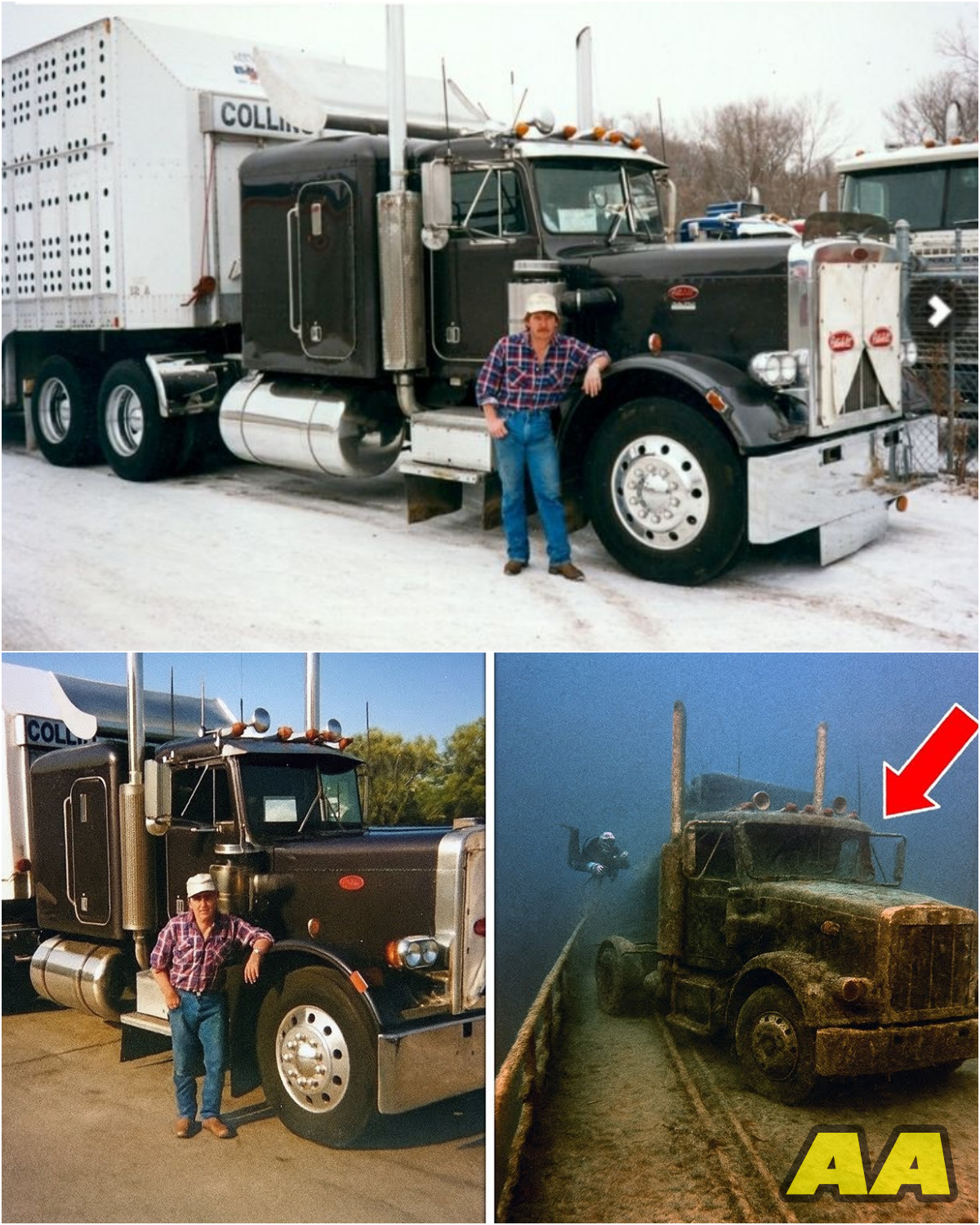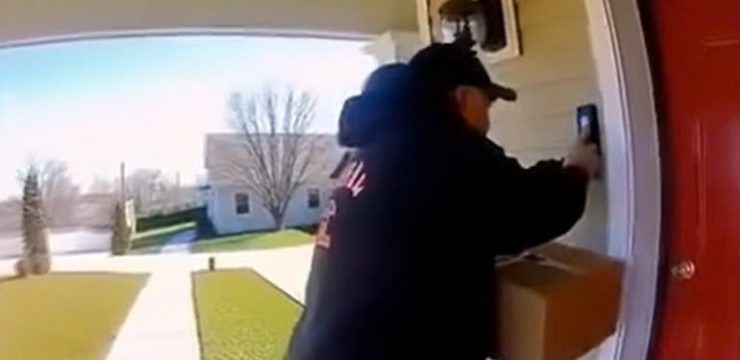On a cold November night in 1992, truck driver Dale Hoffman parked his eighteen-wheeler beneath the fluorescent Texaco sign on Route 287, his Peterbilt loaded with machine parts destined for Dallas. As he walked into the convenience store, he ordered what seemed like a simple meal, a sandwich and a coffee, but the receipt told a different story.

It showed two sandwiches and two coffees, raising a question that would not be answered until decades later. At 11:47 p.m., Dale climbed into his cab and drove off, and within twenty minutes he had vanished without a trace. No accident was reported, no wreckage was found, and no body surfaced. For his wife Linda and his eight-year-old daughter Emma, the silence was unbearable. Theories swirled—perhaps he had abandoned his family, perhaps he had another woman, maybe he had run off to Mexico. After eight months, the insurance company declared him missing and presumed dead, paying out $700,000.
Emma grew up under the shadow of this loss, repeating the story that her father had chosen to leave, never knowing the truth until twenty years later when a drained quarry revealed the secrets that had been hidden beneath its murky waters. In October 2012, construction crews began draining Garrison Quarry in preparation for redevelopment. Thirty feet below the surface, preserved by decades of silt and stagnant water, they discovered a 1987 Peterbilt, waterlogged but intact. Inside, strapped to the driver’s seat, was Dale Hoffman. The oxygen-free environment had slowed decay, leaving him eerily recognizable, with his mustache and chin scar still visible.
The discovery shattered the family’s long-held assumptions—Dale hadn’t left them, he hadn’t started over somewhere else; he had been murdered. The medical examiner found a small-caliber bullet wound at the base of his skull, likely a .22 execution-style shot, but what truly unraveled the mystery was not the bullet, it was the receipt still in his jacket pocket—two sandwiches, two coffees, a silent witness laminated by water and time. When Sheriff Tom Garrett delivered the news to Emma, now 28, she could barely process the words. For twenty years she had believed her father abandoned her, carrying bitterness and grief, only to discover he had been taken from her violently. At the morgue, she and her mother Linda, now remarried, confirmed his identity instantly.
All those milestones he missed—birthdays, holidays, her wedding—were not because he wanted to, but because someone had robbed him of the chance. The investigation soon pointed toward Dale’s business partner and family friend, Carl Briggs. Carl had been at every family milestone, even stepping into a supportive role after Dale’s disappearance. He helped Linda file insurance claims, sold Twin Pines Trucking, and eventually retired comfortably to a lake house. On the night Dale vanished, Carl claimed he had been home sick, his wife Dolores supporting the alibi, but a second Texaco receipt wedged beneath the truck’s passenger seat, purchased at 10:15 p.m. with Carl’s credit card, placed him at the scene with Dale.
Old logbooks belonging to Dale’s brother Wayne revealed troubling notes in Dale’s handwriting: Carl asking about life insurance, Carl gambling again, Dolores looking for him. Carl’s debts were well-known, including large sums lost at truck stop casinos, the kind of debts that invited dangerous collectors. With Dale’s life insurance and business proceeds, Carl stood to gain everything he needed. For Emma, the betrayal cut deeper than the loss itself. Not only had her father been murdered, but the man who had comforted her in his absence may have been responsible for pulling the trigger.
She described her college tuition, paid from the insurance settlement, as “blood money,” tainted by Carl’s crime. Linda remembered Carl suggesting Dale had been depressed and encouraging her to file the insurance claim, lies that now seemed orchestrated. Investigators combed through Dale’s truck, which had become a time capsule. Algae covered the chrome, but details remained hauntingly familiar: the dent from Emma’s childhood bicycle accident, and taped to the dashboard, a photo of Emma from third grade. He had been looking at her face every day on the road, even the night he died. Missing from the cab, however, was his logbook—an essential tool for truckers, its absence a clear sign of deliberate tampering.
The quarry had hidden its truth for twenty years, but the evidence told a damning story. Carl knew the back roads, he had motive, and he had opportunity. Sheriff Garrett reopened the case as a homicide in 2012, confronting Carl, who denied everything, claiming coincidences and insisting his wife’s alibi was true. But coincidences do not buy two sandwiches and two coffees. For Emma, justice was about more than prosecution; it was about rewriting her father’s legacy.
She had grown up with the shame of abandonment only to learn he had been a victim all along. Every forgotten detail, every overlooked receipt, became part of reclaiming his story. In the end, it was the small crumpled slip of paper that outlasted water, time, and silence, proving Dale Hoffman had not been alone that night. Someone had been there with him, someone who wanted him gone, someone who thought the quarry would keep the secret forever. But the truth surfaced, and for Emma, it gave her father back—not as the deserter she once believed, but as a man who loved his family until his last breath.





